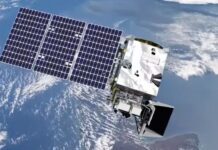NASA’s James Webb Space Telescope has been in space for six months, and it has finally taken its first color pictures, which will be released on July 12.
At a press conference, NASA shared some information about these images and talked about how its brand-new telescope works. This telescope has infrared capabilities that let you see further back in time to the Big Bang, which happened 13.8 billion years ago.
Bill Nelson says that NASA will show the deepest picture of the universe ever made.
“This could answer some of our questions: Where did we come from? What else can you find? Who are we? “Of course, it will answer questions for which we don’t even know the questions yet,” he said.
https://twitter.com/NASAWebb/status/1542920049249468418
After more than two years of delays, the James Webb was successfully launched into space on December 25, 2021, on an Ariane 5 rocket from the Kourou spaceport in French Guiana. It is now about 1.5 million kilometers from Earth and has started its mission. in the orbit of the Sun to try to answer two of humanity’s most mysterious questions: Where do we come from, and what are we? and are we the only ones out there?
It took almost a month to get to the L2 point, where it will stay in orbit as long as it works. Since then, it has started to cool down, bringing the temperature of its instruments down to -233 oC so that they can work safely. Then, on her schedule, she started aligning her panel of 18 hexagonal mirrors that work as one and calibrating her scientific instruments.
Webb’s Mid-Infrared Instrument (MIRI) took a test picture of the Large Magellanic Cloud in May, which was the first picture taken.
The first images to be processed in full color of James Webb science targets, which include different targets in the solar system, exoplanets, the early universe, and a wide range of targets in between.
NASA put a lot of focus on the first spectrum of an extrasolar planet. These spectra, which measure how much light is emitted at different wavelengths, usually give information about a planet’s chemistry and its history of formation.
We still don’t know which exoplanet will be photographed, but we do know that understanding the chemistry of exoplanets’ atmospheres will help planetary scientists understand the true diversity of these faraway worlds, and astrobiologists will be able to look for signs of life by detecting water vapor and certain gases.
“We’ll look at these worlds that keep us up at night, when we look up at the stars and wonder, “Is there life somewhere else?” Zurbuchen declared.
On July 12 at 10:30 a.m. EDT, NASA will release the first images from the observatory that are good enough for science. These images will be streamed live on NASA’s website and social media.
The images from James Webb will give us a detailed look at the worlds we know about. They will also try to give astronomers more tools to study the universe and give scientists important information about future missions.
Hubble’s replacement will be very useful, but Webb will sometimes have to avoid danger because it will have to cross debris fields and even be hit by small meteorites.
Webb is still testing its four science instruments to make sure they work, but after years of planning and waiting, its time has come.



























